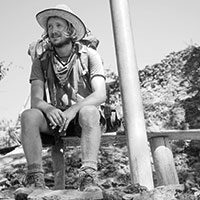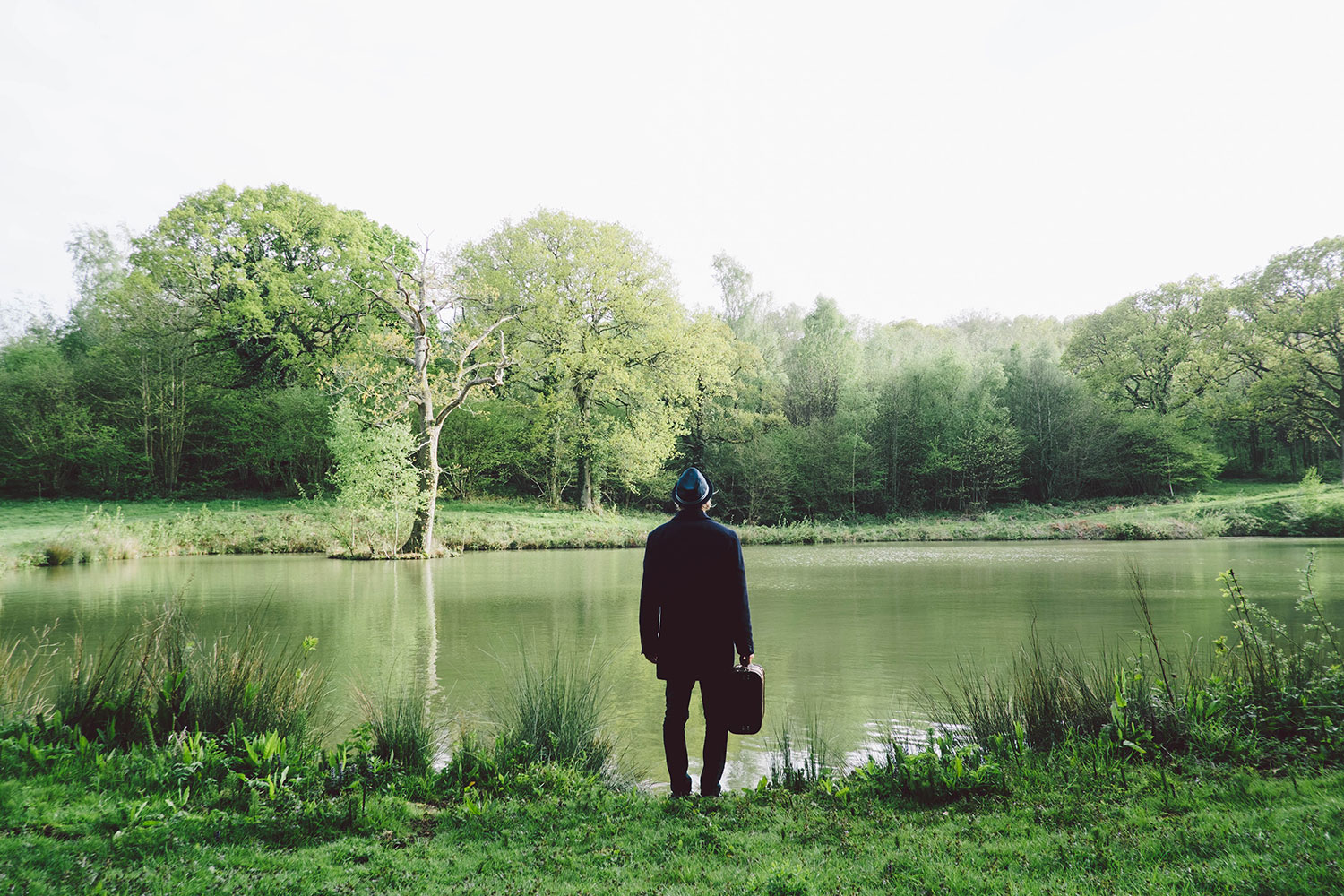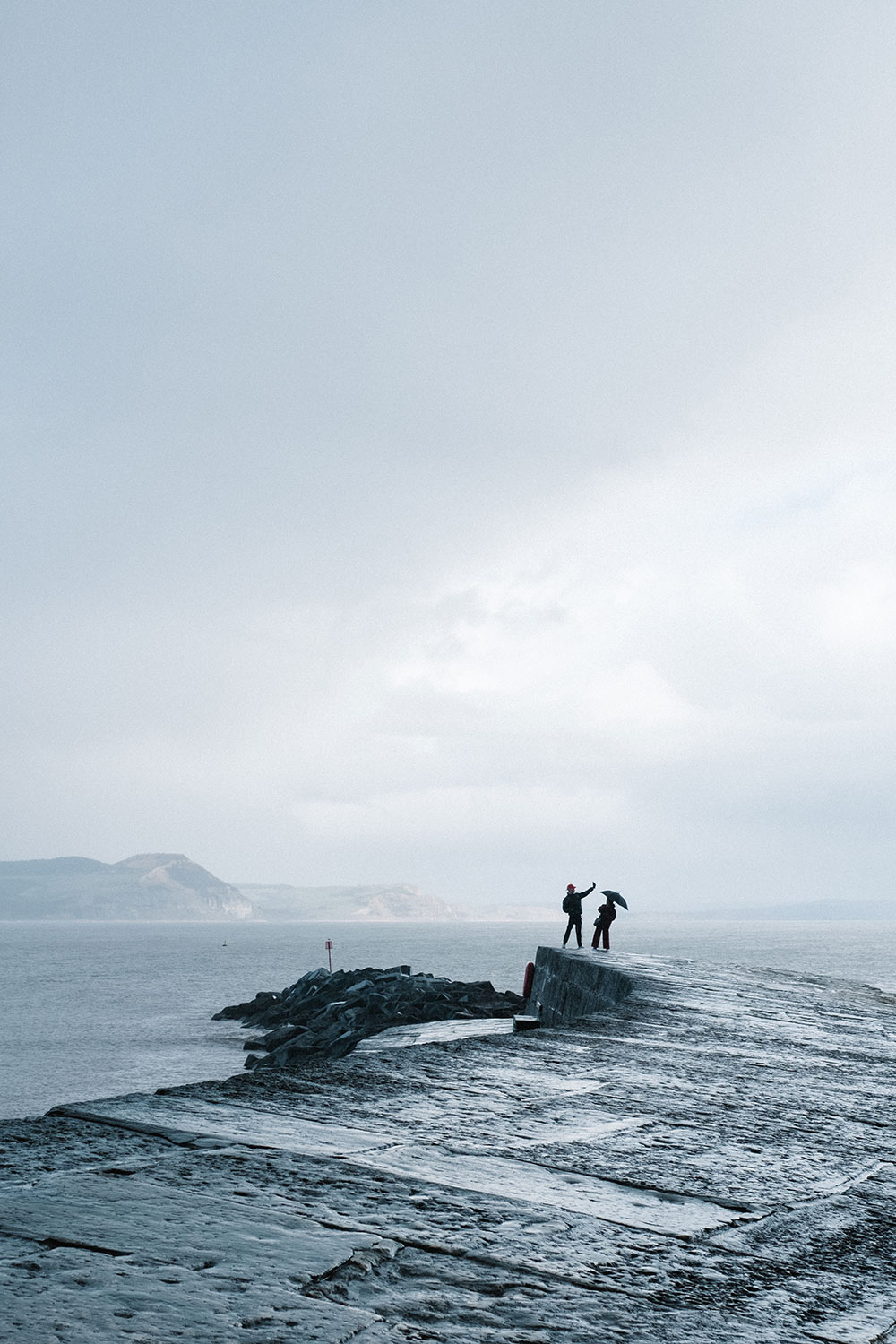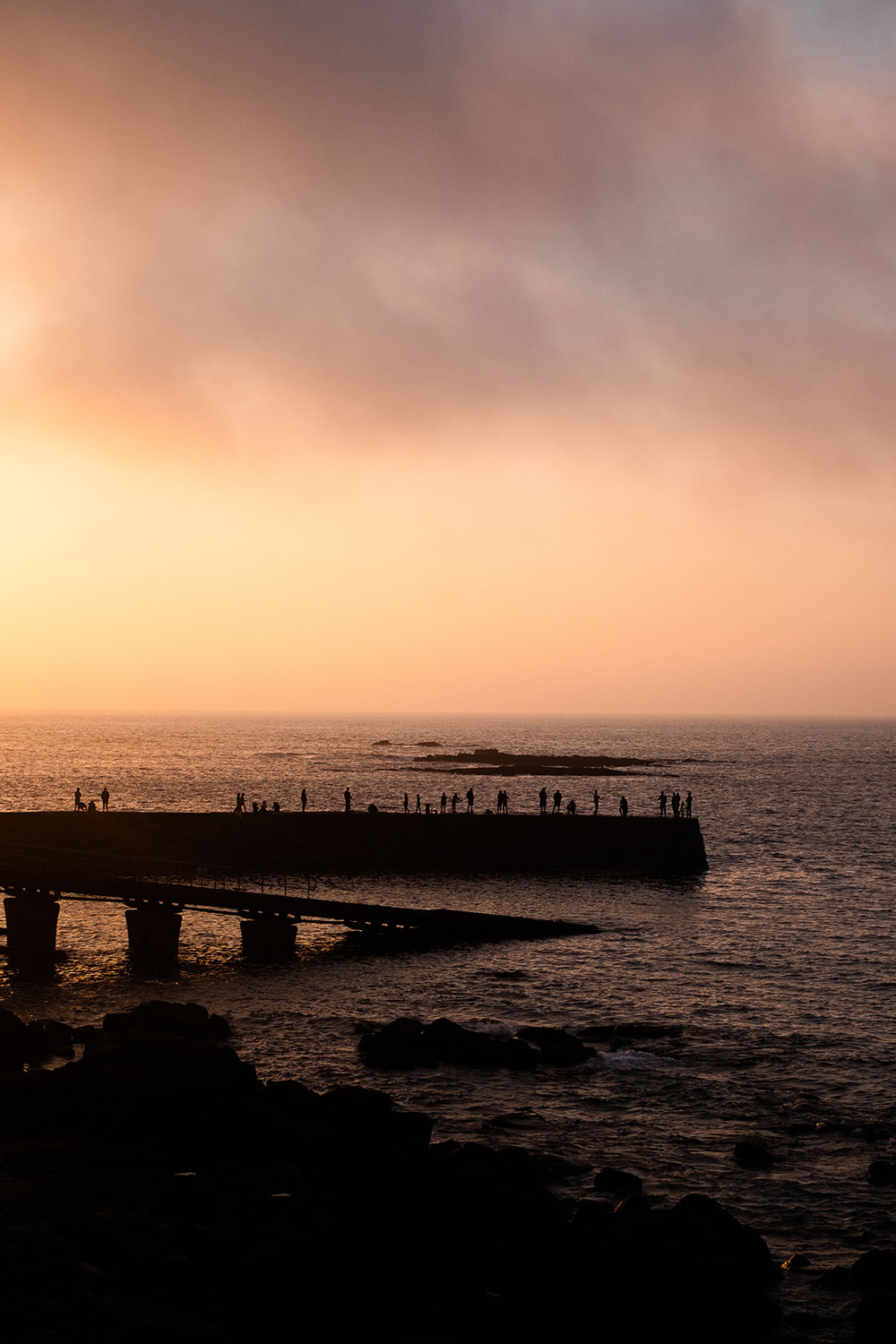A portrait of my life
Hi, my name is Dan Buttifant, I’m 29 and I live in the small coastal village of Ferring just along the coast from Brighton, England. I’m currently working as a care worker and a freelance photographer.
I had just come back from university for the summer and I was rummaging around in the depths of the attic looking for my wetsuit, when I stumbled upon what was my Dads old photography bag. Needless to say, I grabbed it and inspected the contents. A dusty Nikon F301 and Vivitar 35ES were inside and I thought they looked fantastic. I had always carried around a little digital point and shoot camera but the idea of shooting film seemed really cool.
I picked up a few rolls of Kodak Gold from boots and spent my next year of university learning how to shoot film. Let’s just say I had no idea what I was doing at first. Under and over exposed images were my staple for a long time but I stuck with it and ended up having a pretty good understanding of ISO, aperture and shutter speeds by the end of the year. Although my basic photography skills may have improved, my bank balance had not. Shooting film for me was just not a cost-effective option so I decided to broaden my horizons and re-enter the digital world.
I wanted my digital camera to be as close to film camera as possible, shutter speed on the top and aperture on the lens, and a good viewfinder, that was all I wanted. No video, no sports mode, no red-eye reduction, none of that nonsense just a basic camera. So when flicking through a photography magazine and I came across the X100 I couldn’t believe my eyes, it was everything I wanted in one camera.
It also looked stunning compared to all these other horrible large clunky DSLRs that we’re all the rage at the time. It bridged that film digital divide perfectly. I spent many months with my X100, I took it everywhere from the streets to the mountains and to the beach. It was so portable, and performed admirably in all conditions. Not to mention the colour rendition and film simulations were to die for compared to other camera counterparts.
While people complained about the autofocus I didn’t care, the camera was my first love and it could do no wrong. However, like all relationships, you always want more and I soon wanted the X-Pro1. I thought it looked bigger and better than the X100 and I wanted the option of changing lenses as this was a new whole world waiting to be explored.
I guess if the X100 was my first love the X-Pro1 was my first real relationship. I would finish work at 3:15, hope on my bike, be home at 3:30 and be out the door by 3:45 with my X-Pro1 and 18mm f2 lens. This was very much my routine for the whole of spring and summer in 2016.
I explored everything the local landscape had to offer from crop filled fields to low tide beaches and bustling piers. I drifted through the local landscape like a flaneur capturing everything on offer. During this time I also explored self-portraiture and placed myself in empty landscapes as a way of exploring my solitude at the time.
During this period the X-Pro1 didn’t feel like a camera but an extension of myself, I didn’t concern myself with ‘the rules’ of photography but simply enjoyed taking photographs because this is what I felt I had to do. The X-Pro1 doesn’t get in the way of this either, if anything it facilitated this creative period by it simply being a camera that allowed the photographic process to dominate and not menu system.
It was during this period that I really wanted to take my photography further and I subsequently left my teaching job and applied to be a photographer for Raleigh International in Nepal. The earthquake in April 2015 had devastated the country and Raleigh International was working with local project partner and international youth volunteers to rebuild community homes in rural Gorkha.
I had always been drawn to documentary photography and I felt that this role would not only allow me to gain experience but would also allow my photographs to raise awareness about the struggles in rural Nepal. This disposition alone raised a fundamental question about photography that has always stayed with me, is there such a thing as a selfless photograph?
From my time in Nepal, two interactions stand out as important moments for me as a photographer and a human. The first was one late afternoon I had stopped in a remote village and had the evening off. I went for a walk to explore the village and met a young woman with a heavily pierced face and vibrant clothes sitting on her porch drinking Chi. Without changing expression she waved me over and offered me a drink, with my basic Nepalese we exchanged words and both the sat quietly on her porch.
Then she silently stood up and disappeared into her house, then out of the darkness, her hand waved me in. The room was pitch black, buzzing with flies and smelt of human waste. I could see nothing, the heat was intoxicating and then the young women pointed to the corner, where an old women lay naked and vulnerable. The old lady painful raised herself up making strenuous sounds and the young lady pointed at my camera and asked me to take a picture of what I understood to be her mother.
I raised my camera and took a couple of quick photographs on my X-Pro1 and showed them to the young lady, her face light up, she thanked me and waved me off. Her mother was clearly dying and it was an incredibly profound experience that has stayed with me. I feel like the young lady took solace in there being a final picture of her mother.
The second experience that was a profound moment for me in Nepal was in the rural village of Baltar, Gorkha where Raleigh volunteers and local villagers had completed one of the houses and a woman and her husband had moved in. I had my Nepalese friend with me who was to act as translator for the day, however, when we arrived at the house it had become clear that the woman was mute.
We asked around the village but nobody knew her name, or how old she was, just that her husband was mentally disabled and had learning difficulties. They were slightly outcast from the village but they still looked out for them. Nevertheless, I went round to see them but the husband was out and my translator asked if we could take some pictures of her in her new and old house.
She was so excited to show us around and so proud of her new house. She wore these vividly bright red and yellow clothes, and had the most wonderful powerful hands. She had clearly faced much adversity but here she was, strong, proud and powerful. I was in awe of her.
I want to mention these two stories not just because they are important photographic moments for me but also because the camera helped make these moments. Firstly, the X-Pro1 with 35mm 1.4 is completely unobtrusive, neither of the subjects were intimidated by it or put off by the fact I was carrying it. It blended into the moment perfectly. Secondly, the camera being so pure and basic in its features allowed the moment not to get lost in finding the perfect camera setting.
I always shoot my portraits wide open at f/1.4, allow the ISO to never go past 1600 and then set shutter speed through the EVF. It’s such a quick process that literally takes a second and does allow you to lose that connection with your subject. Not losing that spur of the moment connection has always been a vital part of portraiture to me and takes priority over light and positioning every time. These moments are socially creative moment and should not be clouded by photographic rules.
After getting the taste of being a charity photographer I wanted to stay with Raleigh International and had the opportunity to go to Borneo for nine months working on rural water and sanitation projects in the rainforest. By this time, the travel bug had taken me over, and me and my girlfriend headed over to America to trek the Continental Divide Trail (CDT) which spanned 3300 miles from Mexico to Canada.
Throughout all of these trips I had used the same cameras and lens, the X-Pro1 with the 35mm 1.4 and the X100S as my support camera. Both of these cameras were still working and this leads onto my second point of why I love these Fuji cameras. They’re toughness and durability.
I’ve never been one to wrap my cameras in cotton wool, they are tools and there to be worked, not to sit at home looking pretty. I’m also, let’s say, not the most careful with my equipment, I don’t own any lens caps, filters or have a casing for my cameras. I dropped my X-Pro1 and cracked the back screen so I didn’t work and a few months later dropped it again and cracked the viewfinder and it still worked.
I even used it with these cracks throughout 9 months in the rainforest as my primary camera in Borneo and it still worked wonderfully. I was so attached to it, I refused to get a new one. However, the real standout for me has been the toughness and durability of my X100S.
This camera has been with me through the mountains and dusty roads of Nepal and the wet, humid heat of the Borneo rainforest and it still works perfectly, but where it really shone was in America. Now hiking 3300 miles is no easy task you must average well over 20 miles a day for 5 months and subsequently travel light.
Therefore, my X-Pro1 was to stay at home and my X100S was to accompany me on this trip. Its home for this trip simply my bum bag. The camera experienced 40 degree temperatures in the New Mexico desert, sub-zero temperatures in Colorado, as well as heavy snowfall and torrential downpours in Montana.
The camera never missed a beat and delivered in all weather conditions, it really was remarkable and the camera doesn’t even have any weather sealing! Its build quality is just remarkable. See the full gallery from our trip: dbandcm.wixsite.com/cdt2019
On returning to England, my X-Pro1 finally broken working an event in London. Luckily, my X100S finished the job. So it was time for a new camera and it was really a no brainer, although I did spend a while looking at a Leica M240, and then came back to my financial sense and bought the X-Pro2.
I also invested in a couple of other lenses for work purposes, the 50mm f2 and the 16mm f2.8, which are great lenses, but I just don’t use them. My 35mm 1.4 still never leaves the camera, there is just a certain magic quality, personality to the lens that new WR lenses don’t have. Its quirky slower out-focus are what make the camera great, its perfect imperfections.
The best feature of the X-Pro2 for me is that it looks aesthetically and ergonomically just like the X-Pro1. I do actually like the ISO dial on top, more mechanical dials and less buttons is something I can always get behind. The improved sensor is also welcomed. I’ve found the extra megapixels quite useful for cropping into images without losing too much quality. This is something I never really did with the X-Pro1 or X100S.
Ultimately though, the X-Pro2 has come to me at a different part of my life as I try and make photography my full-time career and subsequently enter new facets of the photography world such as product or lifestyle photography. Although so far I’ve found the X-Pro2 hasn’t changed the way I shoot at all, while the styling and ergonomics stay the same, I believe I will always shot the same way. This will forever be the appeal of the camera to me.

Daniel Buttifant is a freelance documentary and lifestyle photographer, hailing from the south coast of Sussex. Daniel first started his photographic journey working for NGO organisations in Nepal covering the response to the devastating earthquake in 2015. Later he continued working for NGOs in Borneo covering water, sanitation and environmental projects. After taking a year off to hike 3300 miles from Mexico to Canada Daniel has returned to the UK where he continues his journey as a freelance photographer.































Albert Smith
February 2, 2021 @ 5:08 pm
They say, don’t judge a book by the cover, and that can also apply to article links. I had no idea what I was instore for as a reader looking at the single photo and the teaser title for your post here, but I clicked to open and wow!
What an adventurous life from just following your dream. Makes me feel a bit guilty to have not been so brave in my youth.
Terrific images… if I didn’t already have every item in your inventory, your photos could have me pulling out the credit card, especially for the 35mm f/1.4, a magic piece of glass which I use more than any other Fujifilm lens.
Thanks for sharing your story. Your pictures make me want to get out and shoot more.
Cat Segovia
February 3, 2021 @ 4:28 pm
Thank you for sharing your photographic journey and story. Your images are beautiful, honest and inspirational. I can feel the energy of the moments. I look forward to looking at more of your work and getting out there and shooting more myself.
Michael Badalamenti
February 9, 2021 @ 6:42 pm
I enjoyed your story and the very authentic images. The 35mm f1.4 is my favorite, too. Nicely done!